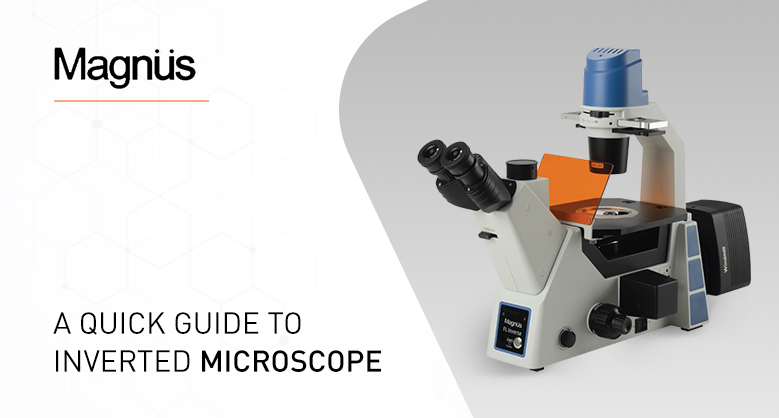A Quick Guide to Inverted Microscope

Optical microscopes are broadly categorized into two types, upright and inverted, based on the positions of the light source and the objective. The basic difference between an inverted and an upright microscope are as follows:-
1. Upright Microscope
- Upright microscopes are constructed with the tip of the objective pointing downward to view the specimen from above. Light is directed on the specimen from below.
-
This type of microscope is suitable for viewing prepared slides.
2. Inverted Microscope
- Inverted microscopes are constructed with the tip of the objective pointing upward to view the specimen from below. The objective is underneath the stage and light is directed on the specimen from above.
-
This type of microscope is suitable for viewing culture vessels such as Petri dishes.
Applications
Inverted microscopes are useful for observing living cells or organisms at the bottom of a large container (e.g., a tissue culture flask) under more natural conditions than on a glass slide, as is the case with a conventional microscope.
Advantages of an inverted microscope over an upright microscope-
- An inverted microscope gives greater freedom than an upright one - For upright microscopes, the size of the sample is limited to fixed height and a weight, depending also on the objective that is being used. This limitation does not apply to inverted microscopes. Because the optics are below the stage, the sample is placed above the objectives. This means that users have greater working distance and can work with huge and heavy samples.
- Inverted microscopes enable to observe more samples in a shorter period of time With an inverted microscope, you simply place your sample on the stage, focus on the surface once and image it.
- Inverted microscopes save time in sample preparation. Sample preparation is limited because the sample can be taken as is and put on the stage. Additionally, only one side of the sample needs to be processed. You save time as you do not need to embed the sample, nor do you need to cut out parts of bigger samples.
September 15, 2021
|
View: 29885
















